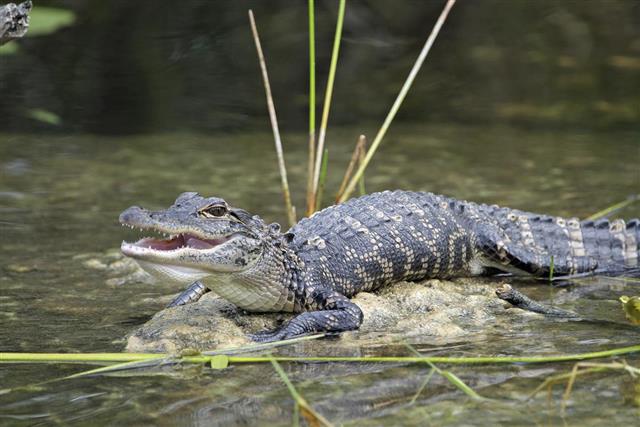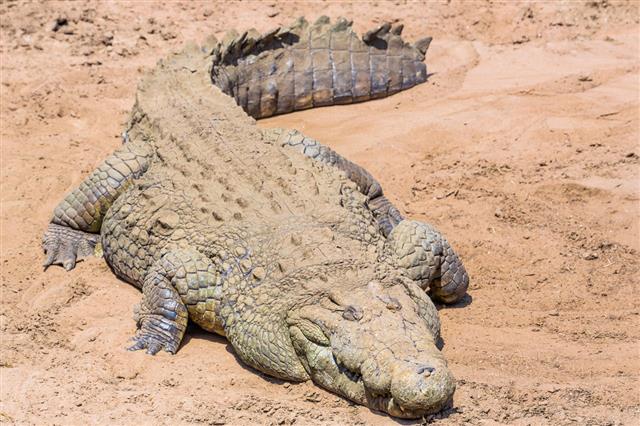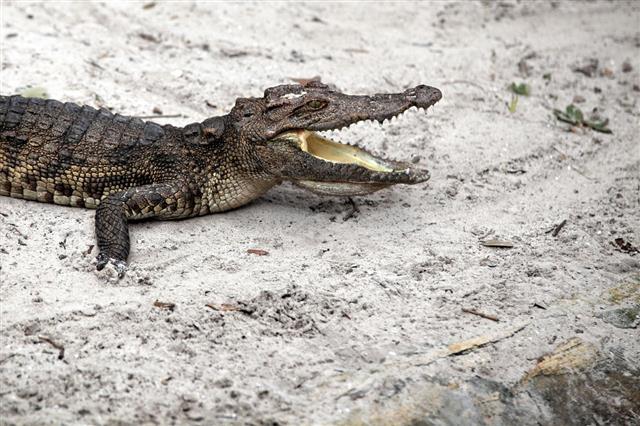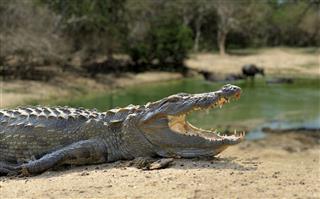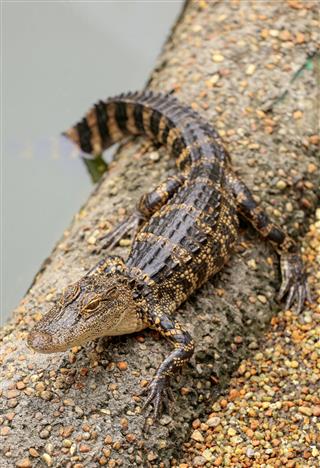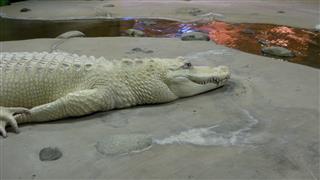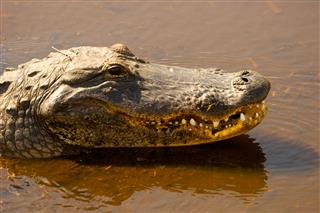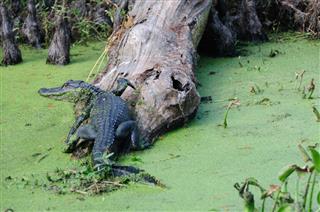
Mistaking an alligator for a crocodile and vice versa is fairly common. Read the following article to understand how the distinction can be done with just a couple of minutes of observation.
Alligators and crocodiles are far from being known synonymously. To begin with, they belong to different taxonomic families altogether, and this is only the classification part of it. Both these reptiles possess vast physical differences, among other aspects, that make it easier for us to identify them.
| Classification | Alligator Vs Crocodile | |
| Kingdom | Animalia | |
| Phylum | Chordata | |
| Class | Reptilia | |
| Order | Crocodylia | |
| Family | Alligatoridae | Crocodylidae |
| Subfamily | Alligatorinae | Crocodylinae |
| Genus | Alligator | Crocodylus |
| Superfamily | – | Crocodyloidea |
Jaw Shape

- The upper and lower jaw of an alligator are of varied dimension.
- The upper jaw is larger in size than the lower jaw, with the lower jaw teeth fitting in a sheltered manner.
- Thus, when it closes the mouth, only the upper jaw teeth are visible on the outside.

- As opposed to an alligator, both the upper jaw and lower jaw of a crocodile are of the same size.
- This results in teeth on both the jaws to interlock. All the teeth are exposed on the outer side even after the jaw is closed.
- The fourth tooth of the lower jaw protrudes out on closing of the jaw. This usually is the most prominent feature to identify this species.
Snout Shape

- The snout of an alligator is U-shaped. The shape of the snout makes it easier to feed on prey, such as deer, turtles, and even a buffalo.
- The broad head of an alligator is more suited for its diet where a significant power and area are required to hold a prey before crushing it; often directly swallowing without chewing on it.
- The head (the mouth and the nose) of a crocodile is V-shaped.
- The snout of a crocodile has been evolved to suit its habitat.
- The narrow nature of the snout helps the crocodile to kill its prey (mainly fish), and at the same time, adapt to the fluid mechanisms taking place in water.
Habitat and Range

- Alligators can survive in both freshwater and seawater, but preferably freshwater.
- Alligators also possess salt glands, but they are non-functional, thus making it a tad difficult for them to stay in seawater for long.
- These reptiles are found only in China and the United States. Both alligators and crocodiles are found only in South Florida.

- Crocodiles prefer seawater over freshwater in spite of being able to survive in both.
- This is also because they possess salt glands — modified salivary glands — on their tongue. The glands help them to get rid of the excess saltwater.
- Crocodiles have a wider distribution; they are found in every continent except the polar regions.
Behavior and Diet

- Alligators are comparatively less aggressive than crocodiles. On an encounter with a human, an alligator will prefer to run away than to attack that person.
- Young ones of an alligator feed on snails and small fish. The diet of the adult alligator comprise turtles, deer, and several mammals.

- Crocodiles are more aggressive than alligators, and are known to attack humans without getting provoked. They often attack the object when threatened.
- The diet of a crocodile mainly consists of fish and amphibians. Usually they are observed to eat anything right from small fish to large mammals.
Dermal Pressure Receptors

Dermal Pressure Receptors (DPR) are black spots on the skin of crocodiles and alligators. These are made of nerve fibers which help the reptile to register even the slightest disturbances in water surface. The vibrations in water make it easier for the reptile to hunt for prey even in the dark.
- Alligators possess the DPRs only on the jaw.
- These sensory organs are located on the entire body of a crocodile.
Given the vast number of species, there are some which might not fit the bill. But in a broader sense, the aforementioned characteristics will almost always help you in distinguishing between an alligator and a crocodile.




